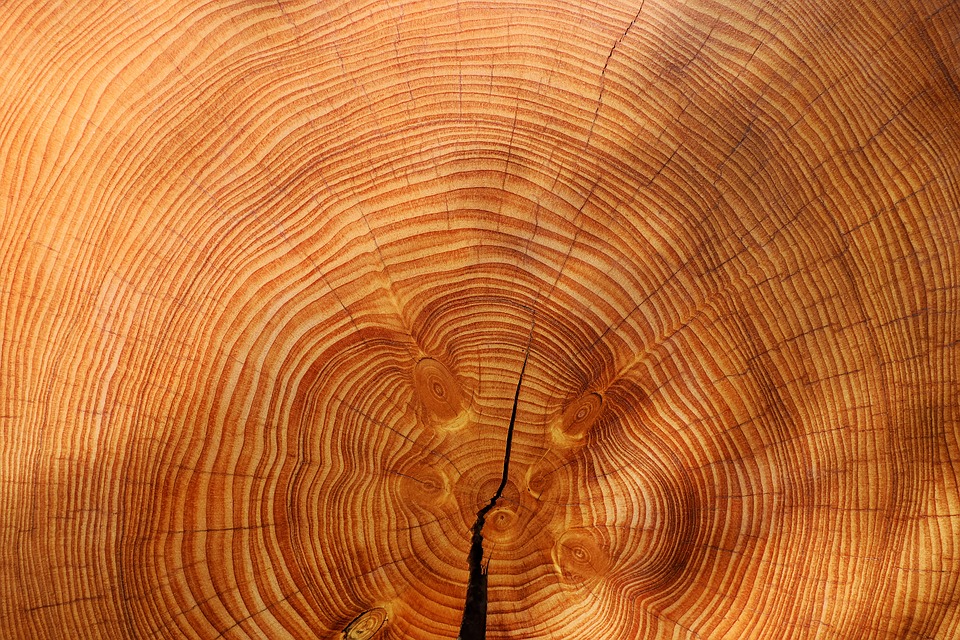Starting a new woodworking project is a great way to be productive, relieve stress, and improve your technique. However, a lot of beginners tend to think that all wood types are the same.
There are many factors to consider when it comes to picking the right wood for your project and without the correct foundation you can risk ruining the final result. The right type of wood makes all the difference; it affects how strong, durable, and visually appealing your project will be.
Whether you’re a pro or a novice, it’s never a bad idea to brush up on your woodworking knowledge.
In this blog, we’ll cover:
- How to define your woodworking project
- Types of wood grain
- Types of wood density
- Popular hardwoods
- Popular softwoods
- Finishing touches and tips
Defining Your Woodworking Project
Before you set off to the shop in search of materials, you’ll need to define your woodworking project. What are you building? Will it be exposed to natural elements, like an outdoor bench? Or will it sit comfortably at home, like a rustic jewellery box?
Depending on the type of object you’re creating, you’ll need to look out for different characteristics when picking a type of wood to work with. For example, hardwoods take much longer to rot and can spend years outside exposed to the elements. Softwoods are resilient in outdoor environments, but they’ll need to be brought in during extreme weather and will benefit from regular treatment.
Another factor that could affect the type of wood you choose is your budget. If you’re trying to keep expenses low, you might be better off choosing an inexpensive type of wood and elevating it with a selection of wood treatments.
Types of Wood Grain
The two types of wood grain are closed grain and open grain. Choosing one over the other is more about visual appeal than anything else. An open grain wood has larger and visible pores that can be seen from afar.
The type of wood grain matters when you’re trying to get a smooth finish. An open grain wood gives your project a distinct and rugged look. Closed grain woods give a smoother finish to your final project. Similarly, if you’re painting your timber, a closed grain wood will take less coats of paint and give a more polished look to the project.
Popular wood types with open grains include cypress, redwood, and oak. On the other hand, cherry, maple, and mahogany are all closed grain woods.
Types of Wood Density
The most important characteristic that differentiates types of woods is the density of the material. Generally speaking, wood is classed as either hardwood or softwood.
Hardwood is easy to maintain, any scratches or dents can be fixed with ease and this type of material is simple to clean. Hardwood is also available in a wide range of colours but, since these trees grow slower, the price of this material is significantly higher. It’s denser than softwood, which makes it difficult to work with but, overall, more durable in the long run. To work with hardwood, you’ll need to use a special blade or chainsaw.
Softwood gives a more seamless finish to woodworking projects. It’s easier to manipulate and more adaptable, not to mention, it’s a more sustainable choice of material, as these types of trees grow much faster. Since this wood is easier to source, it’s also cheaper to purchase than hardwood. On the downside, softwood is weaker and less durable, so unless the wood is treated, you’ll need to be careful when exposing it to harsh weather conditions. It won’t wear as well as hardwood and, if left untreated, it’s also less fire resistant.
Most Popular Hardwoods
Maple
Maple is a hardwood with a closed grain, which makes it easier to sand and smooth down. It’s extremely dense making it ideal for heavy-use furniture, such as dining room tables and dressers. It’s one of the more affordable hardwoods and it can even be stained to resemble a more expensive timber such as Mahogany.
Oak
Oak has been a popular hardwood for centuries, due to its long-lasting and durable quality. If cared for properly, a piece of Oak furniture can last hundreds of years. It’s structurally stable and withholds its dimensions very well. It polishes and stains easily, however, with direct exposure to sunlight Oak can darken a few shades.
Cherry
Cherry has an incredibly attractive colour which is why it’s so commonly used in furniture. It has a smooth, closed grain pattern that takes very well to different stains and dyes. Despite its density, Cherry wood is strong yet malleable. However, if the wood has dried out, the material can warp easily.
Most Popular Softwoods
Pine
Pine is probably one of the most common woods in the world with around 125 different species growing across various temperature regions. Although it’s a softwood with an open-grain, Pine is a long-lasting material if treated appropriately. Pine is often used in panelling, floors, and roofing.
Redwood
Redwood is a softwood that’s incredibly easy to work with, and as the name suggests, it has a slight red hue. This type of timber is great for outdoor projects, such as furniture or decking, as it’s incredibly resistant to moisture. If you’re building something for outdoor use, we don’t recommend staining or painting Redwood, we suggest adding a simple water repellent coat and letting the natural colour shine through.
Cedar
Cedar is also great for outdoor use and it’s highly resilient to the elements. The wood itself has warm, red tones, making it a beautiful pairing for outdoor furniture, such as chests or wardrobes. It’s naturally moth-resistant, making it a great place to store your clothes. This wood is also commonly used for making instruments like Spanish classical guitars.
Finishing Touches and Tips
Remember that different types of wood will benefit from different types of treatments. Ask in your specialist store whether your project or wood could benefit from the use of a topcoat or preservative treatment. This includes things such as UV protection and water resistance.
Staining wood is a great way to give your project your desired look, however, bear in mind that hardwood is rarely ever stained but rather protected with a clear topcoat such as varnish or oil. You should also be aware of light exposure and how this can affect the colour of your wood. Maple, Oak and Cherry, are three types of wood that will ultimately darken over the years when exposed to sunlight.
Picking the right wood for your project isn’t all about visual appeal, it’s about workability, budget, and durability too. Before you settle on a type of wood, it’s best to define your project and outline the requirements for your wood. Once you’ve taken all of this into consideration, pick the perfect match for your woodworking project and get stuck in.
If you are looking for machinery for sale we have over 119 years experience and are happy to help and advise to meet your production requirements.









